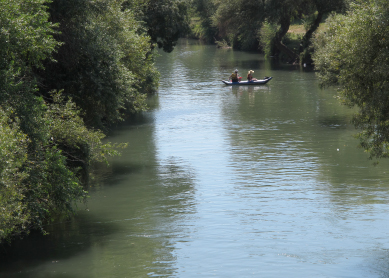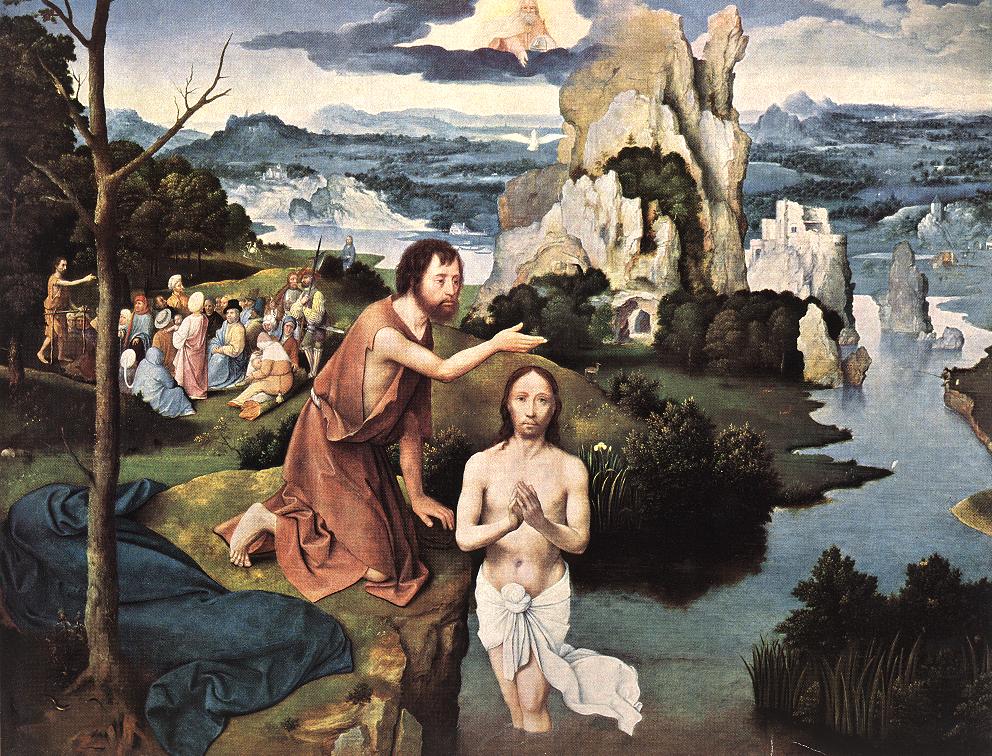Baptism with water, whether by immersion or sprinkling, has always been the primary initiation ritual for Christians. But where did this ritual come from? And what did it mean?
What were the earliest Christian baptisms like?
Many ancient cultures had bathing rituals for important occasions, such as entrance to a holy place or a wedding ceremony. Ancient Jews, for example, used water basins for purificatory immersion after having sex, giving birth, or coming into contact with a corpse. Some of these mikva’ot (mikvehs) have been excavated in Israel. In the early first century CE, a charismatic Jewish prophet named John “the Baptist” developed a variation on this practice. He welcomed people to the wilderness near the Jordan River to experience a one-time baptism of repentance and forgiveness of sins, a kind of entrance into a new phase of one’s life (
Later, Acts describes the supplementary ritual of laying on of hands (
The word baptism means “immersion” or “dipping” or “dunking,” and so it stands to reason that the earliest baptisms were full-body immersions. A second-century source notes a preference for “running water” instead of “standing water” (Did. 7.1), which would both imitate the Jordan River and also provide the cleansing experience more effectively than stagnant water does. But textual sources and archaeology do not offer many more specifics about procedures until the third and fourth centuries. The oldest known baptistery, from a third-century house-church in Syria, was probably not large enough for an adult to experience immersion baptism.
Over the third and fourth centuries, other rituals began to accompany baptism. Christians introduced preparatory fasting and instruction, an emphasis on anointing with oil, laying on of hands, renunciation of sin and the devil, lighting of fire, new garments, and more. Baptism became an important part of larger, composite rites of initiation.
What were the main meanings of these baptismal rituals?
Early Christians ascribed a wide diversity of meanings to these rituals, which varied according to geographical region, time period, and theological orientation. In the New Testament, the baptismal experience was tied to repentance and forgiveness of sins (
One recurring topic of debate concerned postbaptismal sin: if baptism was a one-time event of repentance and forgiveness of sin, then what should Christians do about sins after baptism? Other controversies involved the validity of baptisms administered by baptizers whose holiness, authority, or ritual practices were called into question. Different early Christians gave different responses to these questions, and Christians still do today.
Bibliography
- Hellholm, David, Tor Vegge, Øyvind Norderval, and Christer Hellholm. Ablution, Initiation, and Baptism: Late Antiquity, Early Judaism, and Early Christianity. Berlin: e Gruyter, 2011.
- Jensen, Robin M. Baptismal Imagery in Early Christianity: Ritual, Visual, and Theological Dimensions. Grand Rapids, MI.: Baker, 2012.
- Johnson, Maxwell E. The Rites of Christian Initiation: Their Evolution and Interpretation. Rev. ed. Collegeville, MN: Liturgical, 2007.
- Peppard, Michael. The World’s Oldest Church: Bible, Art, and Ritual at Dura-Europos, Syria. New Haven, CT: Yale, 2016.




